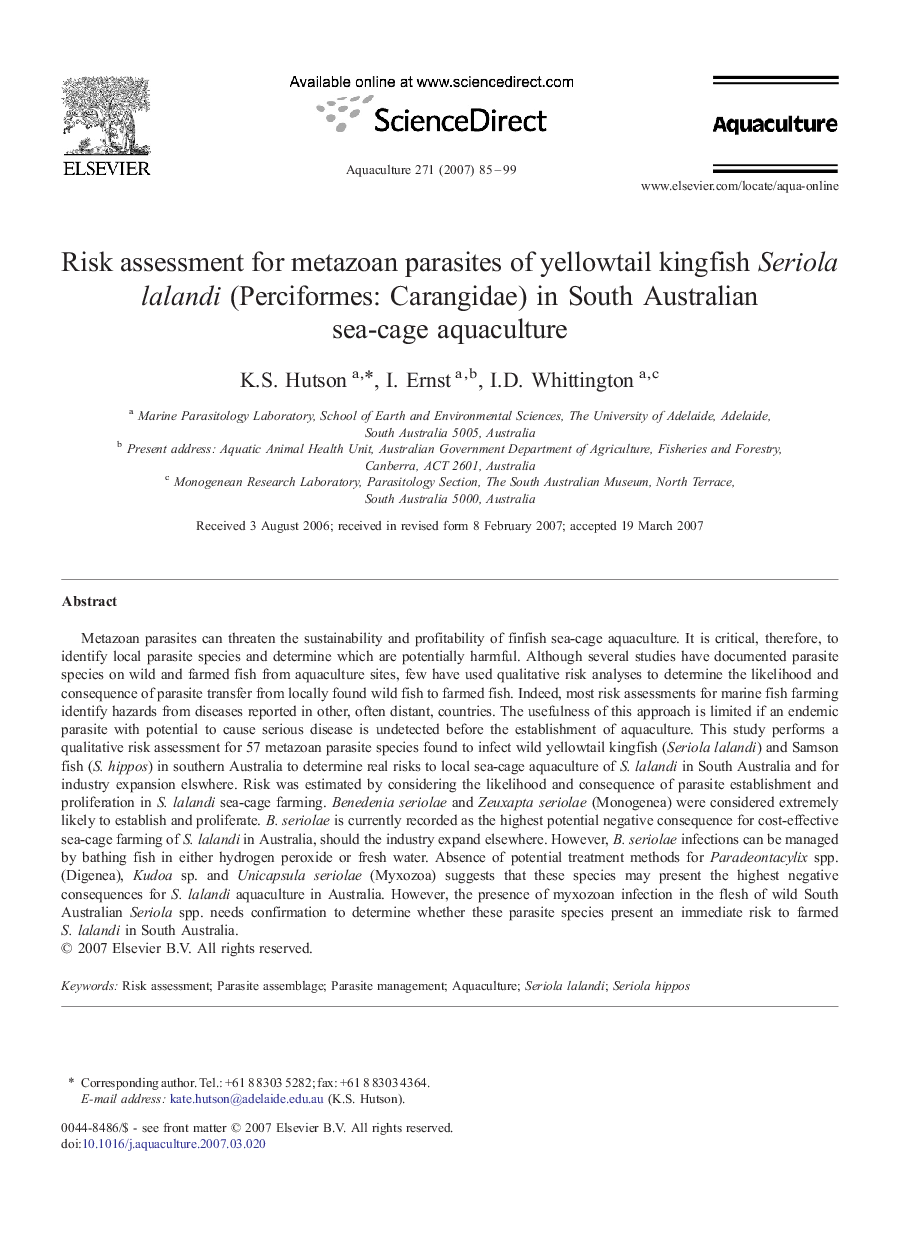| کد مقاله | کد نشریه | سال انتشار | مقاله انگلیسی | نسخه تمام متن |
|---|---|---|---|---|
| 2425133 | 1552971 | 2007 | 15 صفحه PDF | دانلود رایگان |

Metazoan parasites can threaten the sustainability and profitability of finfish sea-cage aquaculture. It is critical, therefore, to identify local parasite species and determine which are potentially harmful. Although several studies have documented parasite species on wild and farmed fish from aquaculture sites, few have used qualitative risk analyses to determine the likelihood and consequence of parasite transfer from locally found wild fish to farmed fish. Indeed, most risk assessments for marine fish farming identify hazards from diseases reported in other, often distant, countries. The usefulness of this approach is limited if an endemic parasite with potential to cause serious disease is undetected before the establishment of aquaculture. This study performs a qualitative risk assessment for 57 metazoan parasite species found to infect wild yellowtail kingfish (Seriola lalandi) and Samson fish (S. hippos) in southern Australia to determine real risks to local sea-cage aquaculture of S. lalandi in South Australia and for industry expansion elswhere. Risk was estimated by considering the likelihood and consequence of parasite establishment and proliferation in S. lalandi sea-cage farming. Benedenia seriolae and Zeuxapta seriolae (Monogenea) were considered extremely likely to establish and proliferate. B. seriolae is currently recorded as the highest potential negative consequence for cost-effective sea-cage farming of S. lalandi in Australia, should the industry expand elsewhere. However, B. seriolae infections can be managed by bathing fish in either hydrogen peroxide or fresh water. Absence of potential treatment methods for Paradeontacylix spp. (Digenea), Kudoa sp. and Unicapsula seriolae (Myxozoa) suggests that these species may present the highest negative consequences for S. lalandi aquaculture in Australia. However, the presence of myxozoan infection in the flesh of wild South Australian Seriola spp. needs confirmation to determine whether these parasite species present an immediate risk to farmed S. lalandi in South Australia.
Journal: Aquaculture - Volume 271, Issues 1–4, 3 October 2007, Pages 85–99